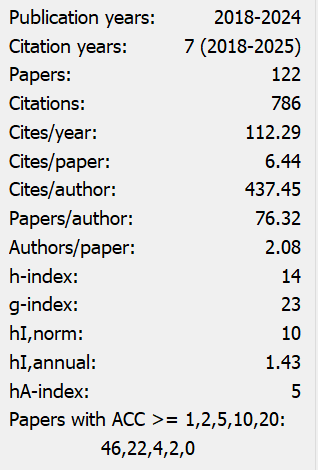International Evidence on Purchasing Power Parity: A Study of High and Low Inflation Countries
Abstract
The purpose of this article is to select a sample of low inflation countries and high inflation countries and examine the long run validity of the relative Purchasing Power Parity doctrine. We explore the notion that countries with historically low inflation experience strong and stable currency and those with a continuous high inflation face weak and depreciating currencies. After a review of the literature, a theoretical model is developed for the relationship between inflation and exchange rate changes. This is followed by some graphical annual time series and empirical results for selected countries. We find our hypothesis is supported for high inflation countries. We then explore productivity differences and their impact on real exchange rates.
References
Cavallo, A., Diewert, W. E., Feenstra, R. C., Inklaar, R., & Timmer, M. P. (2018). Using Online Prices for Measuring Real Consumption across Countries. AEA Papers and Proceedings, 108, 483-87. https://doi.org/10.1257/pandp.20181037
Dickey, D., Jensen, D., & Thornton, D. (1991). A primer on Cointegration with Application to Money and Income. Economic Review, Federal Reserve Bank of St. Louis, 58-77. https://doi.org/10.20955/r.73.58-78
Engle, R., & C. Granger, (1987). Cointegration and error correction: Representation, estimation, and testing. Econometrica, 55, 251-276. https://doi.org/10.2307/1913236
Froot, K. M., & Rogoff, K. (1994). The law of one price and the behavior of relative commodity prices in the very long run: Tests using seven centuries of data, mimeo, Princeton University.
Froot, K., & Rogoff, K. (1991). Government consumption and the real exchange rate: The empirical evidence, mimeo, Harvard Business School.
Froot, K., & Rogoff, K. (2001). The Law of one Price over 700 Years. Revision of NBER Working Paper, 5132.
Johansen, S., & Juselius, K. (1992). Testing structural hypotheses in a multivariate cointegration analysis of the PPP and the UIP for U.K., Journal of Econometrics, 53, 211-244. https://doi.org/10.1016/0304-4076(92)90086-7
Monadjemi, M., & Lodewijks, J. (2021). Inflation and Exchange Rates: An Examination of Relative Purchasing Power Parity. Journal of Economics and Public Finance, 7(3), 1-10. https://doi.org/10.22158/jepf.v7n3p1
Officer, L. (1976). The purchasing power parity theory of exchange rates: A review article. International Monetary Fund Staff Papers, 23, 1-60. https://doi.org/10.2307/3866665
Sachs, J. D., & Larrain, F. B. (1993). Macroeconomics in the Global Economy, Englewood Cliffs, N.J.: Prentice Hall.
Samuelson, P. A. (1964). Theoretical notes on trade problems. Review of Economics and Statistics, 46, 145-169. https://doi.org/10.2307/1928178
Summers, R., & Heston, A. (1991). The Penn world table (Mark 5): An expanded set of international comparisons, 1950-1988. Quarterly Journal of Economics, 106, 327-368. https://doi.org/10.2307/2937941
Taylor, A. M. (2002). A Century of Purchasing-Power Parity. Review of Economics and Statistics, 84(1), Feb., 139-150. https://doi.org/10.1162/003465302317331973
Taylor, A. M., & Taylor, M. P. (2004). The Purchasing Power Parity Debate. Journal of Economic Perspectives, 18(4), Fall, 135-158. https://doi.org/10.1257/0895330042632744

This work is licensed under a Creative Commons Attribution 4.0 International License.
Copyright for this article is retained by the author(s), with first publication rights granted to the journal.
This is an open-access article distributed under the terms and conditions of the Creative Commons Attribution license (http://creativecommons.org/licenses/by/4.0/).


























